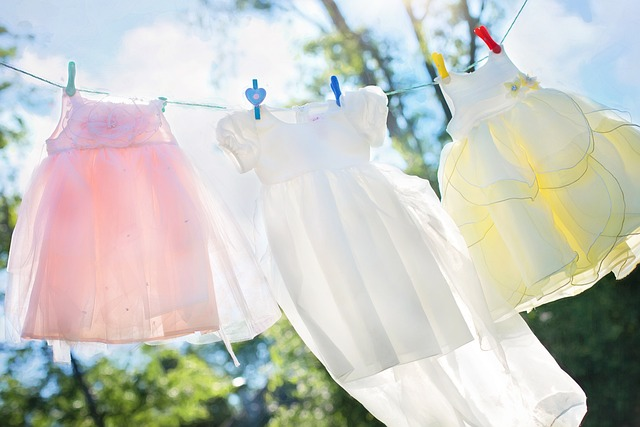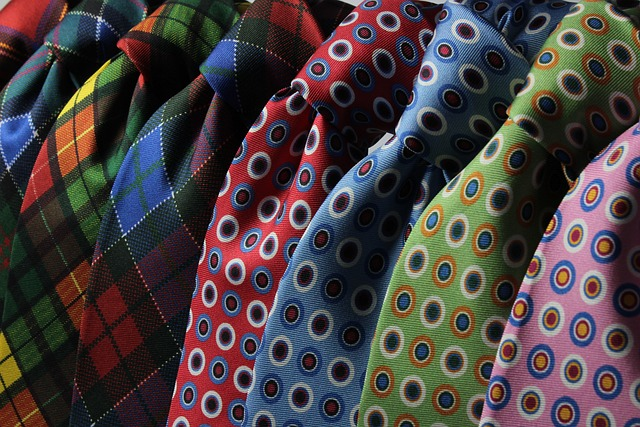How Do Dry Cleaners Clean Clothes?
Find out how we breathe new life into your wardrobe! Learn the process of dry cleaning from solvents to machines to stain removal techniques. See how Cleaner’s Supply is part of the journey to give your clothes the VIP treatment. We’ll take you through how do dry cleaners clean clothes and turn your favourite garments into perfection.
What Is Dry Cleaning?

Dry cleaning is a special cleaning process beyond what your home washing machine can do. It’s called “dry” cleaning because unlike regular washing, it doesn’t use water as the main cleaning agent. Dry cleaners use special chemical solvents to gently remove dirt, stains and odours from your clothes.
Dry Cleaning Process
As you drop off your clothes at the dry cleaners, the behind the scenes magic begins, carefully crafted to preserve and enhance each fabric’s individuality. The process involves the following steps:
Types of Stains and Fabrics
Your silk blouse and your denim jacket – the variety of fabrics requires different treatment. With expertise, dry cleaners navigate through different stains, from oil based to water based. It’s a stain removal symphony, where each note is played according to the fabric’s rhythm.
Tagging
Your garment gets a ticket to this process – a tag. This tag is your garment’s passport, guiding it through the process. It has all the important information, from fabric type to care labels, so every garment gets the special treatment.
Pre-Treatment
Before the big clean, the trouble spots come out to play. With a combination of expertise and technology, dry cleaners pre-treat the stains to set the scene for removal. The goal is to be clean and to remove all visible imperfections.
Specialized Machines
The magic happens within the specialized dry cleaning machines. Unlike regular washing machines, these machines are computer controlled and precision made. They inject a dry cleaning solvent, often water based for environmental reasons, which gently touches each fabric, cleans without excess water.
Extraction and Drying
After cleaning, the extraction process takes over. This removes any remaining solvent so your clothes aren’t just clean but free of cleaning agents. The drying cycle follows, using warm air to get your garments dry and ready to wear.
Post-Spot Treatment
The show isn’t over yet. After drying, each garment gets an encore – the post-spot treatment. Any stubborn stains that didn’t get cleaned in the first round are addressed, so your clothes aren’t just clean but stain free.
Final Inspection
Before your garments take their final bow, they get a once over. Broken zippers, missing buttons, loose threads – every detail is checked to meet the high standards of professional dry cleaners. Your garments come back to you looking perfect and ready to impress.
Environmental Considerations
In an era of sustainability, dry cleaners are leading the charge. The industry is moving towards eco friendly solvents and sustainable packaging. This commitment to eco practices means the art of dry cleaning is in tune with a greener future.
As you pick up your freshly cleaned garments from the dry cleaner, you’re not just getting clothes, you’re getting art. Your garments aren’t just clean, they’re being cared for, so they look and feel as good as the day you got them. Next time you drop off your clothes at the dry cleaner, you’re not just getting a service, you’re preserving a craft.
Types of Dry Cleaning

Drying process for synthetic fabrics using commercial cleaner. Little or no water clean solvent and iron on strip
When you care for your garments, dry cleaning is an art with many ways to go. Let’s take a look at the types of dry cleaning and what’s behind each method.
Traditional Dry Cleaning
When you drop off your garments at the dry cleaner, they probably get traditional dry cleaning. Here a solvent, often perchloroethylene or petroleum based, is used. The process involves immersing your clothes in this solvent and cleaning them without water. It’s a tried and true method that’s been the backbone of the dry cleaning industry.
Water-Based Cleaning
Imagine a dry cleaning process that uses water instead of traditional solvents. That’s water-based cleaning for you. Specialized detergents are used and the cleaning happens in a way similar to regular laundry but without the agitation of a washing machine. It’s a more sustainable option for fabrics that can get water.
Green or Wet Cleaning
In an era of sustainability, green or wet cleaning is the sustainable solution. This method uses biodegradable and non toxic detergents so your clothes get a gentle yet effective clean. It’s an eco friendly way that’s in line with the growing demand for greener practices in the dry cleaning industry.
Carbon Dioxide (CO2) Cleaning
Ever heard of cleaning with carbon dioxide? CO2 cleaning is the latest method where liquid carbon dioxide is the cleaning agent. This process not only cleans effectively but has environmental benefits. The CO2 is pressurized, turns into a liquid and works its magic on your clothes then reverts back to a gas leaving no residue.
Silicone-Based Cleaning
For those who want an alternative to traditional solvents, silicone based cleaning is the answer. Liquid silicone is the star, a effective and sustainable solution. The process is gentle on your garments and the environment.
Professional Wet Cleaning
For professional use only, wet cleaning is the best of both worlds. Water based detergents designed for professional use ensure a thorough clean. It’s often recommended for delicate fabrics and garments that need extra care.
Each type of dry cleaning has its own characteristics so there’s a method that fits your wardrobe. Next time you drop off your clothes for dry cleaning you can appreciate the artistry involved and know your garments are in the hands of professionals who understand each method.
Pros & Cons of Dry Cleaning
When it comes to garment care, deciding to dry clean involves many factors. Let’s see the pros and cons, addressed to you so you can make an informed decision.
Pros of Dry Cleaning
- Professional Care for Delicate Fabrics: Dry cleaners use specialized techniques and organic solvents to care for delicate fabrics that regular washing can damage.
- Effective Stain Removal: Targeted dry cleaning chemicals and pre-treatments ensure even the toughest stains, including grease stains, are removed.
- Preservation of Garment Quality: The gentle cleaning methods and solvents used in professional dry cleaning helps preserve your clothes.
- Suitable for Water-Sensitive Fabrics: Water based stains and fabrics that can’t withstand regular washing find a solution in dry cleaning where liquid solvents are the hero.
- Convenience and Efficiency: The drop off location of your local dry cleaner plus the efficiency of the extraction cycle in modern dry cleaning machines makes the process convenient and time saving.
- Specialized Treatment for Unique Items: Whether it’s a synthetic fabric or an intricate garment, specialized solvents and commercial cleaners ensures each item gets the attention it deserves.
- Professional Expertise: The dry cleaning industry which started with early solvents has evolved with the expertise of professionals who understand the art of cleaning.
Cons of Dry Cleaning
- Chemical Residue: Some chemical residue may still be left behind despite effective extraction cycles especially with petroleum based solvents.
- Environmental Impact: Using certain solvents like chlorinated or petroleum based ones may have environmental implications so we need greener options.
- Cost: Professional dry cleaning with specialized equipment and staff may be more expensive than regular washing.
- Fabric Damage: While dry cleaning is gentle on most fabrics, some very delicate items may still be damaged.
- Limited DIY: Unlike regular washing which can be done at home, dry cleaning requires specialized machines and chemicals so limited DIY options.
What can be Dry Cleaned?

As you face your wardrobe, various fabrics and garments stare back at you. Have you ever wondered which can benefit from the dry cleaning magic? Check out the items that can be revitalized with dry cleaning.
Delicate Fabrics That Need Special Care: You have garments with delicate fabrics – silk blouses, wool suits, intricate garments. These are dry cleaning candidates. The gentle touch of a liquid solvent ensures these fabrics get the care they deserve and helps preserve their quality and longevity.
Business Attire for a Sharp Look: Your business attire – suits, blazers, dress shirts – needs that level of crispness and sharpness that regular washing can’t provide. With their specialized technology, dry cleaning machines keep your professional wardrobe looking sharp.
Stain Prone Garments in Need of Rescue: We all have those favorite garments that attract stains like magnets. The stain pre-treatment process combined with the expertise of dry cleaning staff and the efficiency of a dry cleaning business can work miracles in removing tough stains and giving your clothes a second life.
Winter Items: As the seasons change, your winter items – coats, jackets, woolen garments – come out of hibernation. Made from fabrics that need gentle care, these items find refuge in dry cleaning. Removing dirt and preserving fibers is key to making these pieces last.
Special Occasion Dresses and Evening Wear: Special occasion dresses and evening wear require more than regular care. Whether it’s a cocktail dress or a formal gown, the meticulous dry cleaning process ensures these garments will shine as bright as when you first wore them.
Leather and Suede: Leather and suede items need special attention with different textures. Dry cleaning with clean solvents and professional equipment can cater to these unique materials and keep them soft and damage free.
Everyday Items That Need a Boost: Your everyday items – shirts, blouses, trousers and the efficiency of a dry cleaning business – can benefit from the process. Often with minimal or no water, dry cleaning ensures these garments are clean without compromising their structure.
Household Items Beyond Your Closet: Dry cleaning goes beyond your closet. Household items like curtains, drapes and bedspreads can also be entrusted to dry cleaning professionals. The cleaning work extends to your living areas so a total freshness touch.
In dry cleaning, many items get a second life. Whether it’s delicate fabrics, business attire, winter items or household items, dry cleaning gives each piece the care it needs.
FAQs
What solvents are used in dry cleaning?
In the dry cleaning process, chlorinated solvents which are known for their stain removal properties are used.
How does a dry cleaning machine work?
Dry cleaning machines use chemical solvents like chlorinated solvents to clean garments without water, a gentle and efficient process.
What is dry scouring in the cleaning process?
Dry scouring is a pre-treatment process used by dry cleaners to remove tough stains before the actual cleaning process.
How did dry cleaners clean clothes in the past?
The dry cleaning industry started with chemical solvents as an alternative to water based cleaning for delicate fabrics.
Dry Cleaners Clean Clothes
Dry cleaners have a process that is meticulous and uses specialized solvents designed to clean clothes with care and precision. These solvents do two jobs, they clean thoroughly and remove stains from different fabrics. By using these tailored solutions, dry cleaners have mastered the art of preserving your garments and making them stain free, proof of their expertise in garment care and maintenance.
Read Other Related Articles On Our Healthy Home Blog:
Top 7 Best Upholstery Cleaners: Effortless Stain Removal
How Do Dry Cleaners Clean Clothes?
Power Scrub Deluxe Carpet Washer Review: The Incredible Hoover FH50150
Informative #1 Guide To Clean Microfiber Couches At Home?
Other Locations:
